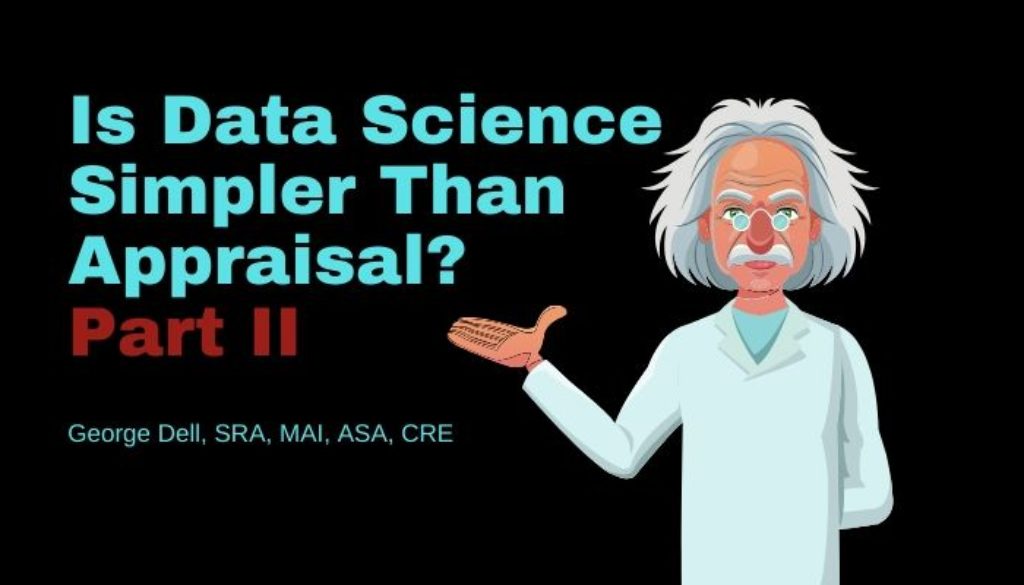In this Part II, (see Part I here) we will reduce the comparison to the component comparable parts.
Appraisal: Pick comps. Make adjustments. Opine a number.
Data Science: Identify data. Clean the data. Run predictive algorithms.
Similar huh?
Well – yes and no. Let’s look around. We begin with the beginning:
- What questions do we want to answer?
- What is the asset we wish to model?
In this, Part II, before we consider the specific asset – the subject of the research – we will consider the nature of identification of the problem, and how our attitude might be different with a data science approach versus the traditional ‘appraisal’ approach.
Appraisal approach. We must clarify what is an appraisal. In the United States, it is defined by the private organization, the Appraisal Foundation; and enforced by the 54 states and jurisdictions. Some of these states require all appraisals to comply with USPAP, the Uniform Standards of Professional Appraisal Practice. However, in all these states, non-appraisers are allowed to do ‘valuations,’ which also are an opinion of value, but performed by a non-appraiser, except . . . . Follow so far? The Foundation is supported by fees and taxes, and bi-annual revised education and exclusive publishing profits. The fees are assessed on all licensed appraisers, appraisal reviewers and teachers.
The Appraisal Institute, the largest real property professional organization, also has Standards (SVP) and Ethical Rules. These are stable, principles-based, and require minimal re-publishing. Available at no charge to the public, members, and non-members. There are also International Valuation Standards (IVS), similarly free, not requiring ongoing revision.
‘Appraisal’ has many connotations and laws and viewpoints. We focus on the fundamental historical view. The “valuation process” is set out in The Appraisal of Real Estate (Appraisal Institute):
1) identify the users, use, value, date, property characteristics, and assumptions;
2) Determine scope of work;
3) Collect data (market area, subject property, comparable data);
4) Analyze data (market and “highest and best use”);
5) Land value opinion;
6) Apply three approaches (comparison, income, cost); Reconcile indications and opinion;
7) Report.
Data Science approach:
- Identify the problem, as above (abductive reasoning and personal experience);
- Identify the market segment and predictor variables (five dimensions);
- Apply three analytic algorithms (calculated, estimated, asymptotic);
- Estimate reliability score and other analytic results;
- Send modified data stream.
This brings us back to the core issue:
- Appraisal returns an opinion of a point value.
- Data science (Evidence Based Valuation©) returns additional analytic results, including market price, ‘intrinsic’ value, forecast value, and a risk/reliability score.
The conclusion for Part II, we ask, Which is simpler? Appraisal is comfortable and familiar and based on judgment. Data science provides input to further analytics such as risk/portfolio management and enables rational governmental policy decisions.
Data science algorithms are logic and computation, teamed with enlightened professional judgment.

June 17, 2020 @ 8:38 am
Good, clear article. Too bad so many appraisers are resistant to change to a better way that has a higher value for their clients.